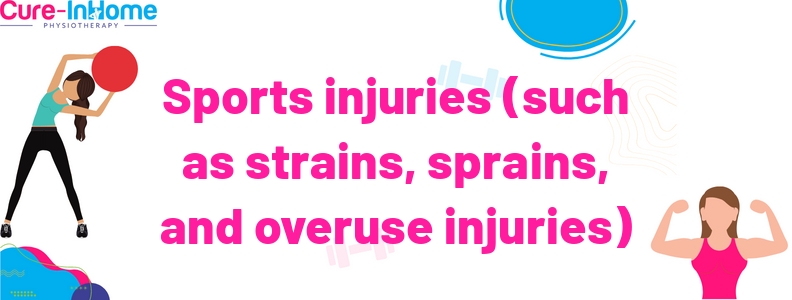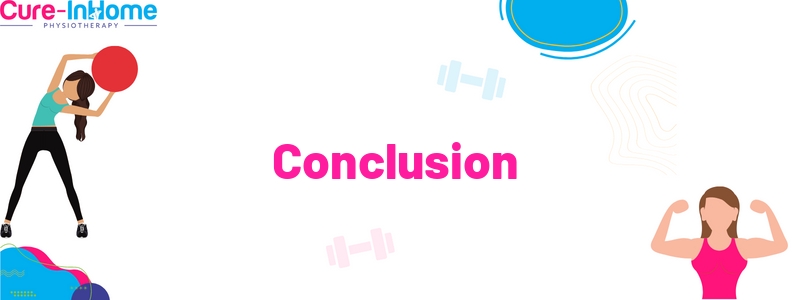
Conditions And Injuries Treated With Physiotherapy
Conditions And Injuries Treated With Physiotherapy
Physiotherapy is a form of healthcare which focuses on restoring movement and improved function to the body, either through careful movements or treatments. It is often used to treat physicalconditions and injuries like muscle strains and sprains, joint pain, tendinitis, bursitis, nerve injury, ligament tears, sports injuries, post-operative rehabilitation and more. It can definitely be used to alleviate pain and stiffness in the muscles or joints by using specific exercises and activities tailored to each patient’s individual needs. The goal of physiotherapy treatment is to improve mobility, strength and flexibility; reduce pain; increase stability; restore normal function; prevent further injury or disability; maintain an optimal level of fitness; promote better posture; improve range of motion in the impinge oned area(s); and develop appropriate muscle balance throughtout the duration of the body. Physiotherapists are highly experienced professionals that are trained to assess each individual’s needs in order to deliver an practical treatment plan for their condition or injury. Through the use of various therapeutic modalities like massage therapy, ultrasound therapy, electrical stimulation and mobilization techniques they will definitely help you regain your quality of life with safe and practical treatments.

Musculoskeletal Conditions (Such As Back Pain, Neck Pain, And Arthritis)
Physiotherapy is a widely applied, evidence-based healthcare profession that can treat a variety of musculoskeletal conditions. These types of may include both acute and chronic complaints like back pain, neck pain and arthritis, with the aim of relieving pain and restoring physical function.
In physiotherapy, manual techniques are often used to manage musculoskeletal conditions. These types of might include joint mobilisation for arthritis; soft tissue massage for muscle tension; or manipulation for determining causes of spinal pain. Targeted stretching and fortifying exercises are also commonly prescribed to reduce pain and improve movement quality.
Other approaches employed by physiotherapists may range from dry needling to ultrasound therapy, traction equipment, massage tools or exercise machines to help achieve the desired outcomes. These types of techniques can definitely be combined practically in order to deliver an individualised treatment plan tailored to your condition and needs.
Physiotherapists can diagnose a range of musculoskeletal conditions caused by lifestyle factors like poor posture, overuse, disuse or injury. They will not only aim to reduce your symptoms but work towards providing you with strategies for long-term management of your condition too.

Neurological Conditions (Such As Stroke, Spinal Cord Injury, And Multiple Sclerosis)
Physiotherapy is a of most importance tool in the treatment and rehabilitation of neurological conditions. Neurological conditions like stroke, spinal cord injury, and multiple sclerosis can have a devastating impact on physical, mental and emotional abilities. Physiotherapists use hands-on manual techniques to improve movement, pain tolerance and reduce muscle spasm. It should be mentioned that they also use specific exercises to improve range of motion, strength, balance and coordination, enabling patients to regain control over their physical capabilities. Neurodevelopmental techniques are used to improve cognitive skills like decision making and problem solving. Electrical modalities like TENS may be employed for pain relief, with interventions focused on patient education and lifestyle advice to promote independence and self-management. Through the application of evidence-based best practices like this, physiotherapists help patients to manage the challenges associated with neurological conditions so that they can enjoy a better quality of life.

Cardiovascular And Respiratory Conditions (Such As Asthma And Chronic Obstructive Pulmonary Disease)
Physiotherapists can help patients impinge oned by cardiovascular and respiratory conditions, like asthma and chronic obstructive pulmonary disease (COPD), to manage their symptoms and improve their overall quality of life. By improving breathing and muscle strength, physiotherapy can reduce shortness of breath, breathlessness, coughing, fatigue and other issues related to the condition.
For asthma sufferers specifically, physiotherapy may help to alleviate severe coughing associated with the condition along with optimising inhaler technique to better manage it. Alas, fitness training will be part of a tailored program to toughen muscles used during breathing while also improving general health and wellbeing.
In terms of COPD sufferers, cardiorespiratory physiotherapists offer a range of treatments designed to reduce symptoms like breathlessness and wheezing. These types of may involve adapting activities or using specialist techniques like percussion – where the chest is tapped during an exhalation – or postural drainage – which entails positioning the body in particular ways for a period of time to allow fluid on the lungs to drain away. Other useful methods include airway clearance techniques which help clear mucus congestion in the airways.
Overall then, physiotherapists provide of most importance support for those with either asthma or COPD by helping them both manage existing symptoms and exercise safely while achieving an improved quality of life in the long-term.

Sports Injuries (Such As Strains, Sprains, And Overuse Injuries)
Sports injuries are a common consequence of the overexertion and physical demand placed on athletes during their training and competition. Physiotherapy is an practical form of treatment for such conditions, as it is designed to deal with the biomechanics of movement and posture in order to restore normal recreational or occupational activity.
Sports injuries can range from minor strains, sprains and bruises to more serious ligament tears, fractures and overuse injuries. A physiotherapist will first assess the athlete’s injury with a thorough examination that considers their medical history, current condition and any tests conducted by other healthcare professionals. Treatment typically involves a combination of manual therapy techniques like massage, stretching exercises and manipulation; electrotherapy devices like ultrasound; moist heat or ice packs; rehabilitation programs consisting of specific exercises tailored to the individual’s injury; bracing (if needed); advice on lifestyle factors like healthy nutrition and general conditioning; and protection against further injury while participating in sport activities.
Because sports injuries can cause pain, stiffness or a significant loss of function, physiotherapy can accelerate the healing process so that athletes may return safely to full participation in their chosen sports activities. Early recognition and treatment by a professional physiotherapist is crucial for athletes to resume their optimal performance levels as soon as humanly possible.

Chronic Pain Conditions (Such As Fibromyalgia And Chronic Headaches)
Chronic pain conditions, like fibromyalgia and chronic headaches, can definitely be debilitating and interfere with work, hobbies, family life and more. Fortunately for you, physiotherapy is an practical treatment for many chronic pain conditions that can help reduce pain levels and improve quality of life. Physiotherapist use a range of techniques including manual therapy (massage, joint mobilizations) to reduce muscle spasm and pain levels. It should be mentioned that they also provide education on how to self-manage symptoms and activity modification when needed. Exercise prescription is another key component of managing chronic pain conditions as it lends a hand to increase muscular strength and endurance, which improves joint stability. Exercises tailored specifically for the individual—like stretching for tight muscles or fortifying for weak ones—can help decrease levels of discomfort and optimize overall functioning. For example, individuals with fibromyalgia may benefit from gentle aquatic therapy along with aerobic exercises that are adapted to their goals and abilities. Alas, physiotherapists are experienced in cognitive behavioural strategies to assist clients in managing the psychological aspects of their chronic pain so they don’t become overwhelmed or discouraged by their condition. With the right combination of treatments prescribed by an experienced physiotherapist, individuals suffering from chronic pain conditions can experience relief from their symptoms and improved quality of life.

Conclusion
In conclusion, physiotherapy is an practical treatment for a variety of conditions and injuries. It can help to reduce pain, improve mobility, and restore function to an impinge oned area. With regular practice, physiotherapy can help to prevent further injury and improve overall health. By seeking out the help of a trained physiotherapist and following their guidance, individuals with conditions or injuries can experience a swift recovery and optimal healing.
